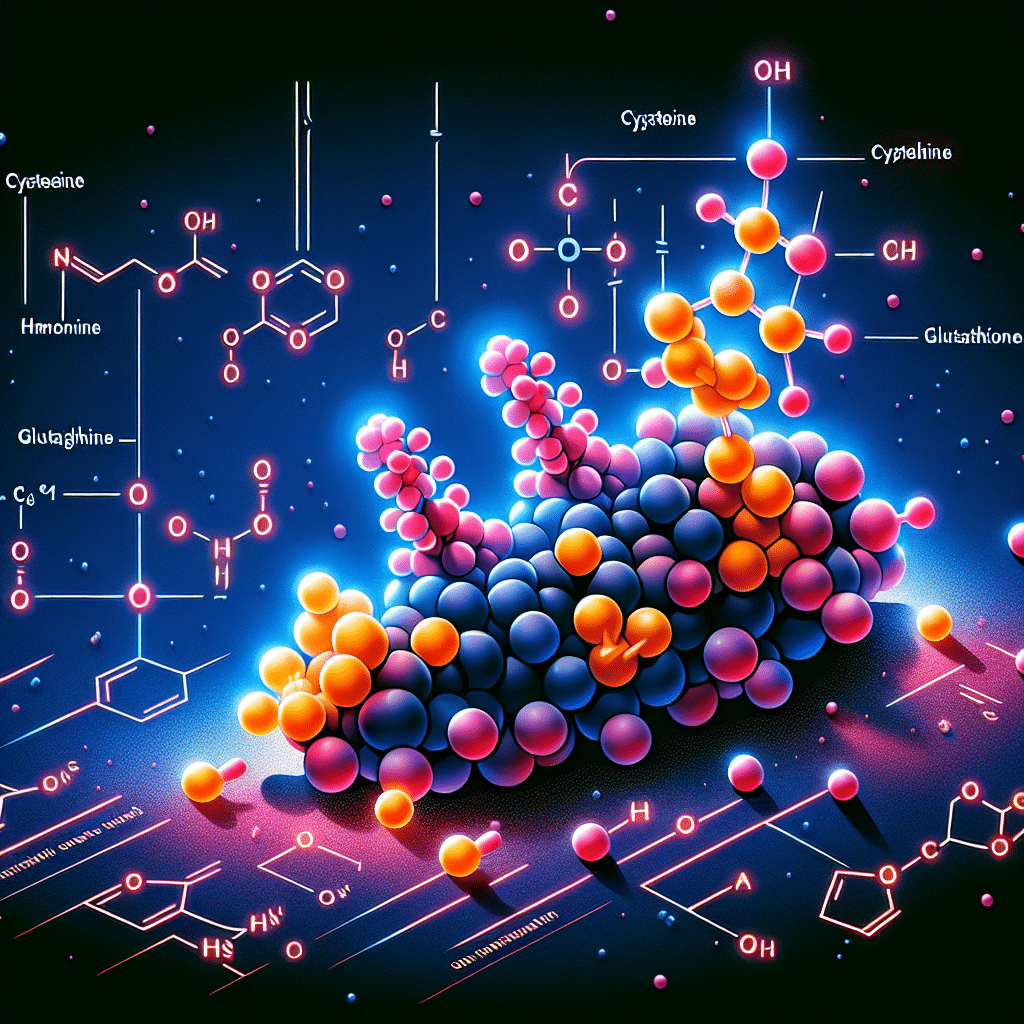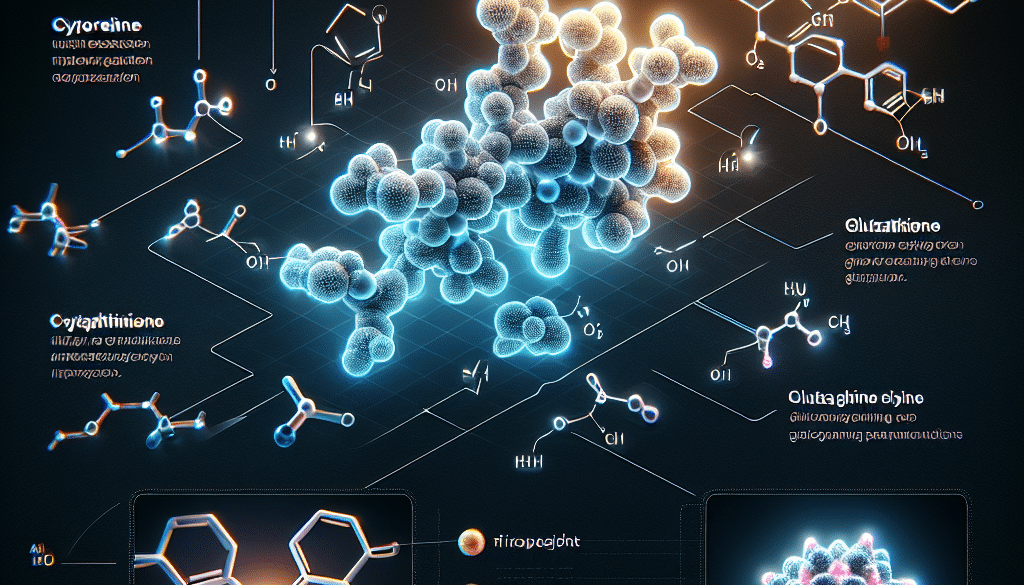Cysteine and Glutathione Fluorescence: Overview
-
Table of Contents
- Cysteine and Glutathione Fluorescence: An In-Depth Overview
- Understanding Cysteine and Glutathione
- Fluorescence Properties of Cysteine and Glutathione
- Factors Affecting Fluorescence
- Biological Significance of Cysteine and Glutathione Fluorescence
- Applications in Research and Medicine
- Case Studies and Statistics
- Conclusion: Key Takeaways on Cysteine and Glutathione Fluorescence
- Discover High-Quality Proteins with ETprotein
Cysteine and Glutathione Fluorescence: An In-Depth Overview

Fluorescence spectroscopy has become an indispensable tool in the field of biochemistry and molecular biology, providing insights into the structure, function, and dynamics of biomolecules. Among the amino acids, cysteine and the tripeptide glutathione stand out for their unique fluorescence properties, which have been exploited in various research and clinical applications. This article delves into the fluorescence characteristics of cysteine and glutathione, their biological significance, and the practical applications of this phenomenon.
Understanding Cysteine and Glutathione
Cysteine is a sulfur-containing amino acid that plays a critical role in protein structure and function. Its unique thiol (sulfhydryl) group is highly reactive and can form disulfide bonds, which are essential for the stability of many proteins. Glutathione, on the other hand, is a small peptide composed of glutamate, cysteine, and glycine. It is a powerful antioxidant that protects cells from oxidative stress and is involved in various metabolic and detoxification processes.
Fluorescence Properties of Cysteine and Glutathione
Fluorescence occurs when a molecule absorbs light at a specific wavelength and then emits light at a longer wavelength. Both cysteine and glutathione exhibit intrinsic fluorescence due to their ability to absorb ultraviolet light and emit at a specific range of wavelengths. The fluorescence of cysteine is primarily attributed to its thiol group, while the fluorescence of glutathione is influenced by the presence of the cysteine residue within its structure.
Factors Affecting Fluorescence
- pH levels: The fluorescence intensity of cysteine and glutathione can vary with changes in pH, as protonation and deprotonation can affect the electronic structure of the molecules.
- Environment: The surrounding environment, including solvent polarity and the presence of other molecules, can influence the fluorescence characteristics of cysteine and glutathione.
- Concentration: The concentration of these molecules can also impact their fluorescence intensity, with higher concentrations often leading to quenching effects.
Biological Significance of Cysteine and Glutathione Fluorescence
The intrinsic fluorescence of cysteine and glutathione is not only a fascinating physical property but also has significant biological implications. For instance, changes in the fluorescence of these molecules can indicate alterations in the cellular redox state, which is crucial for maintaining cellular homeostasis. Additionally, the ability to monitor glutathione levels through fluorescence provides valuable information about the oxidative stress status of cells and tissues.
Applications in Research and Medicine
The fluorescence properties of cysteine and glutathione have been harnessed in various applications, including:
- Protein folding studies: Cysteine fluorescence is used to monitor protein folding and unfolding processes, as changes in the environment of the thiol group can be detected through shifts in fluorescence.
- Cellular imaging: Fluorescent probes based on glutathione can be used to image and track changes in glutathione levels within living cells.
- Disease diagnosis: Abnormal levels of glutathione have been associated with several diseases, and fluorescence-based assays can aid in the diagnosis and monitoring of these conditions.
Case Studies and Statistics
Several studies have demonstrated the utility of cysteine and glutathione fluorescence in scientific research. For example, researchers have used fluorescence techniques to investigate the role of glutathione in cancer cells, revealing that certain cancer types exhibit altered glutathione metabolism. Additionally, statistics from clinical studies indicate that patients with liver diseases often have decreased glutathione levels, which can be detected through fluorescence-based assays.
Conclusion: Key Takeaways on Cysteine and Glutathione Fluorescence
In summary, the fluorescence properties of cysteine and glutathione offer a window into the molecular world, providing insights into protein structure, cellular redox states, and disease mechanisms. The ability to detect and measure these molecules with high sensitivity and specificity has significant implications for research and clinical practice. As our understanding of fluorescence phenomena continues to grow, so too will the potential applications in the fields of biochemistry and medicine.
Discover High-Quality Proteins with ETprotein
If you are looking for premium protein products, including those related to cysteine and glutathione research, ETprotein is your go-to source. ETprotein offers a wide range of high-quality protein powders and supplements that cater to various industries, including nutraceuticals, pharmaceuticals, and food and beverage. Their commitment to excellence ensures that you receive the best products for your research and development needs.
About ETprotein:
ETprotein, a reputable protein and L-(+)-Ergothioneine (EGT) Chinese factory manufacturer and supplier, is renowned for producing, stocking, exporting, and delivering the highest quality organic bulk vegan proteins and L-(+)-Ergothioneine. They include Organic rice protein, clear rice protein, pea protein, clear pea protein, watermelon seed protein, pumpkin seed protein, sunflower seed protein, mung bean protein, peanut protein, and L-(+)-Ergothioneine EGT Pharmaceutical grade, L-(+)-Ergothioneine EGT food grade, L-(+)-Ergothioneine EGT cosmetic grade, L-(+)-Ergothioneine EGT reference grade and L-(+)-Ergothioneine EGT standard. Their offerings, characterized by a neutral taste, non-GMO, allergen-free attributes, with L-(+)-Ergothioneine purity over 98%, 99%, cater to a diverse range of industries. They serve nutraceutical, pharmaceutical, cosmeceutical, veterinary, as well as food and beverage finished product distributors, traders, and manufacturers across Europe, USA, Canada, Australia, Thailand, Japan, Korea, Brazil, and Chile, among others.
ETprotein specialization includes exporting and delivering tailor-made protein powder and finished nutritional supplements. Their extensive product range covers sectors like Food and Beverage, Sports Nutrition, Weight Management, Dietary Supplements, Health and Wellness Products, and Infant Formula, ensuring comprehensive solutions to meet all your protein needs.
As a trusted company by leading global food and beverage brands and Fortune 500 companies, ETprotein reinforces China’s reputation in the global arena. For more information or to sample their products, please contact them and email sales(at)ETprotein.com today.














